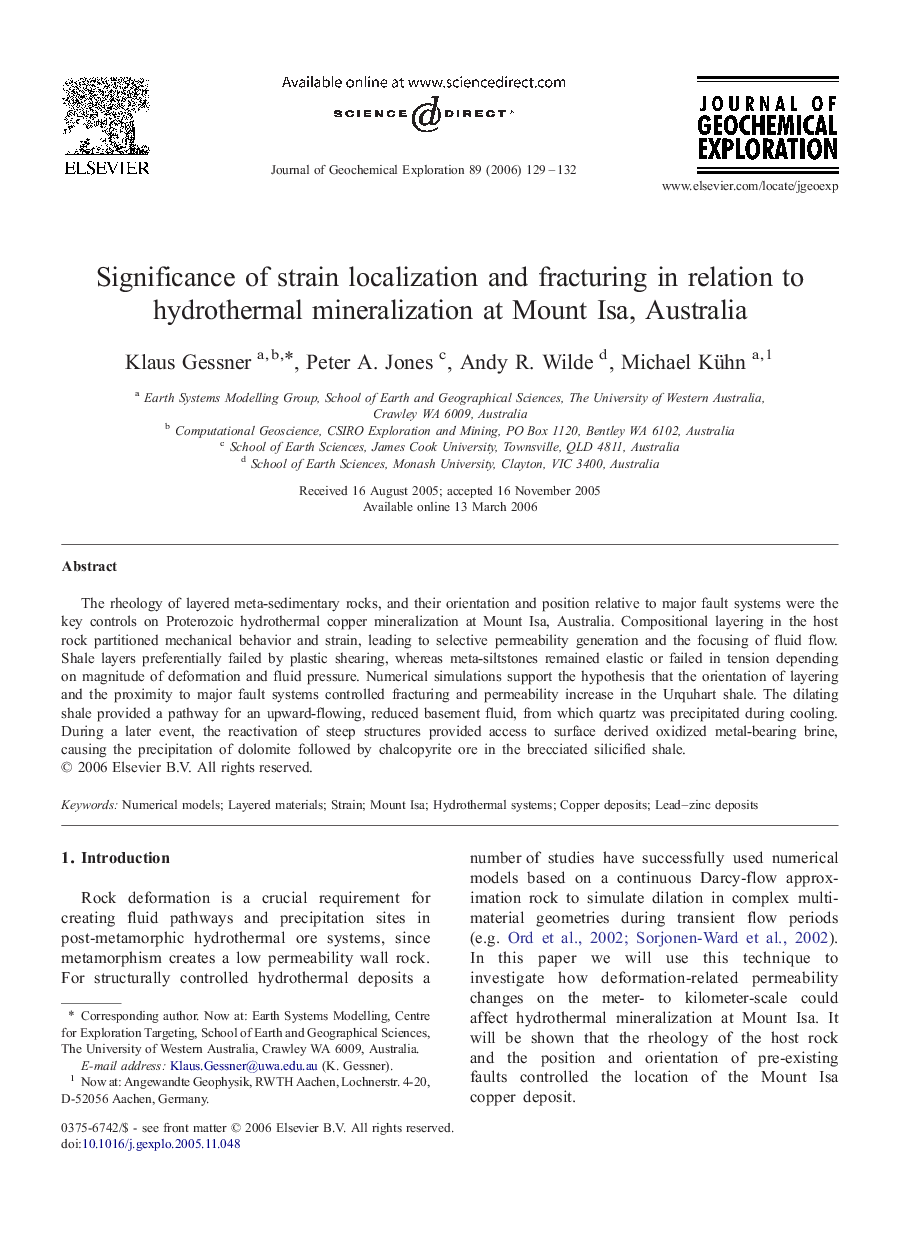| Article ID | Journal | Published Year | Pages | File Type |
|---|---|---|---|---|
| 4458434 | Journal of Geochemical Exploration | 2006 | 4 Pages |
The rheology of layered meta-sedimentary rocks, and their orientation and position relative to major fault systems were the key controls on Proterozoic hydrothermal copper mineralization at Mount Isa, Australia. Compositional layering in the host rock partitioned mechanical behavior and strain, leading to selective permeability generation and the focusing of fluid flow. Shale layers preferentially failed by plastic shearing, whereas meta-siltstones remained elastic or failed in tension depending on magnitude of deformation and fluid pressure. Numerical simulations support the hypothesis that the orientation of layering and the proximity to major fault systems controlled fracturing and permeability increase in the Urquhart shale. The dilating shale provided a pathway for an upward-flowing, reduced basement fluid, from which quartz was precipitated during cooling. During a later event, the reactivation of steep structures provided access to surface derived oxidized metal-bearing brine, causing the precipitation of dolomite followed by chalcopyrite ore in the brecciated silicified shale.
